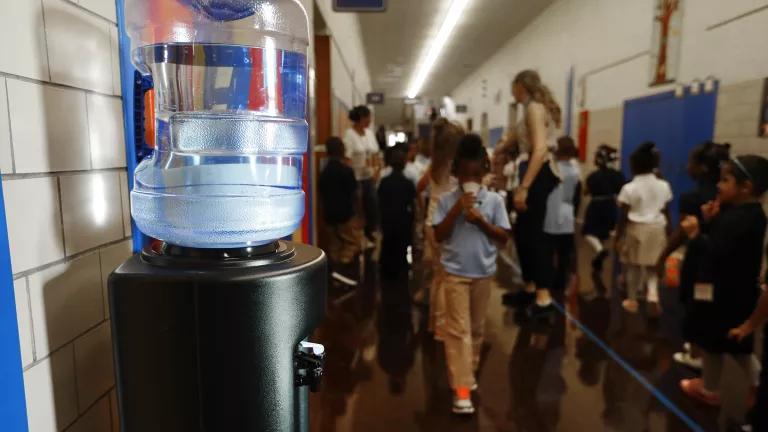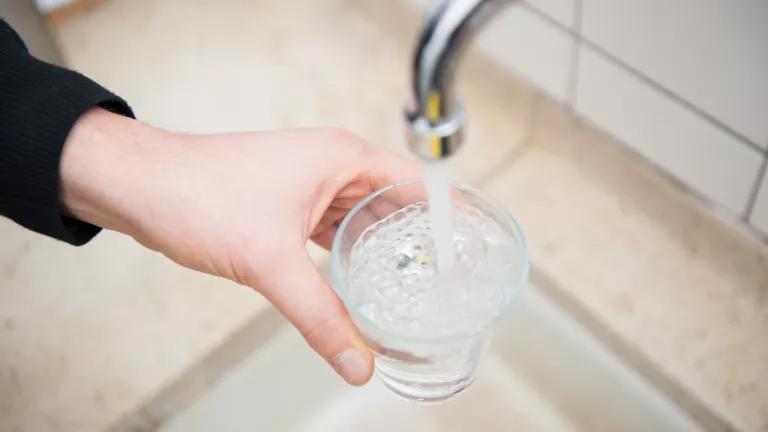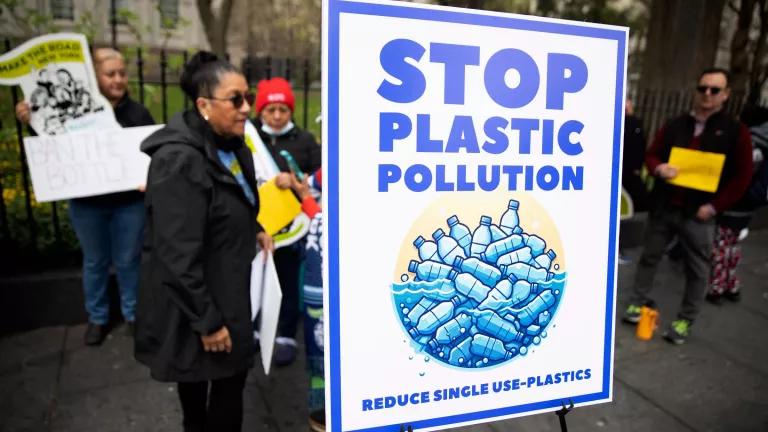NRDC Sues EPA for Its Illegal Rule That Will Expose Millions to Toxic Lead in Drinking Water

The Trump administration’s ineffective Lead and Copper Rule leaves the health of millions of children at high risk.
UPDATE: On December 9, 2022, the U.S. Environmental Protection Agency (EPA) announced that it will no longer defend the drinking water lead regulation set by the Trump administration, which NRDC and our partners challenged as being inadequate and illegal. The EPA will instead commit to revisiting the issues we brought forth and to proposing a new rule by September 2023. “Safe drinking water is a basic human right,” says NRDC's Erik D. Olson. “EPA must quickly tackle the lead contamination crisis by setting a much stronger lead rule and ensuring that all lead water pipes are pulled out of the ground in the next decade.”
NRDC sued the U.S. Environmental Protection Agency today, asking the courts to strike down the EPA’s new Lead and Copper Rule, the outdated federal protection meant to keep lead—a potent neurotoxin with no safe level of exposure—out of drinking water. The agency released its final changes to the rule this past December; among the numerous do-nothing updates, it delays and, in most cases, refuses to require the removal of the six million to ten million lead service lines that remain in use across the country.
“Drinking water from the often century-old pipes is like drinking from a lead straw,” says Erik D. Olson, senior strategic director of health at NRDC. “The only way to ensure that lead contamination doesn’t get into our tap water from these pipes is to pull them out of the ground and replace them. While that’s not cheap, it’s doable and very important to protecting children’s health, according to every major children’s health association. The Trump EPA’s weak and illegal rule will condemn another generation of children to drinking lead-tainted tap water.”
Even low lead levels pose significant health risks, particularly to children and fetuses, including damage to the brain and nervous systems, learning disabilities, and impaired hearing.
Communities of color, particularly in Black, Latino, and low-income neighborhoods, are far more likely to have water systems that violate the EPA’s already weak rules meant to reduce lead and other contaminants in drinking water.
“It’s unacceptable that the EPA’s new rule fails to lift the burden of contamination facing so many largely Black and Brown communities already exposed to unacceptably high levels of lead and other dangerous chemicals in the water and air,” says Jeremiah Muhammad, water justice program manager with Little Village Environmental Justice Organization in Chicago, a city that has an estimated 400,000 lead service lines in use, more than any other city in the country. “Adding insult to injury, the EPA has simply refused to ensure that states and cities like Chicago will improve people’s health by removing dangerous lead pipes that contaminate drinking water.”
Substantial changes were needed to modernize, strengthen, and simplify the Lead and Copper Rule, which hasn’t been significantly updated since 1991.With the Trump administration’s failure to do so, the incoming Biden administration must tackle the lead-in-water crisis head on.
Experts recommend replacing the unsafe “action level” of 15 parts per billion (ppb), which currently isn’t directly enforceable, with a strict maximum contaminant level for lead of 5 ppb, as well as requiring the full replacement of all lead service lines—the primary culprit of lead contamination—within the next decade. Partial lead service line replacements should be banned.
A series of high-profile drinking water crises in recent years, as seen in places like Flint, Michigan, and Newark, New Jersey, made the failures of the existing law clear. While both cities are now taking action to address the issue, a strong Lead and Copper Rule, coupled with effective enforcement, would help to avoid similar public health crises in other communities across the country.


